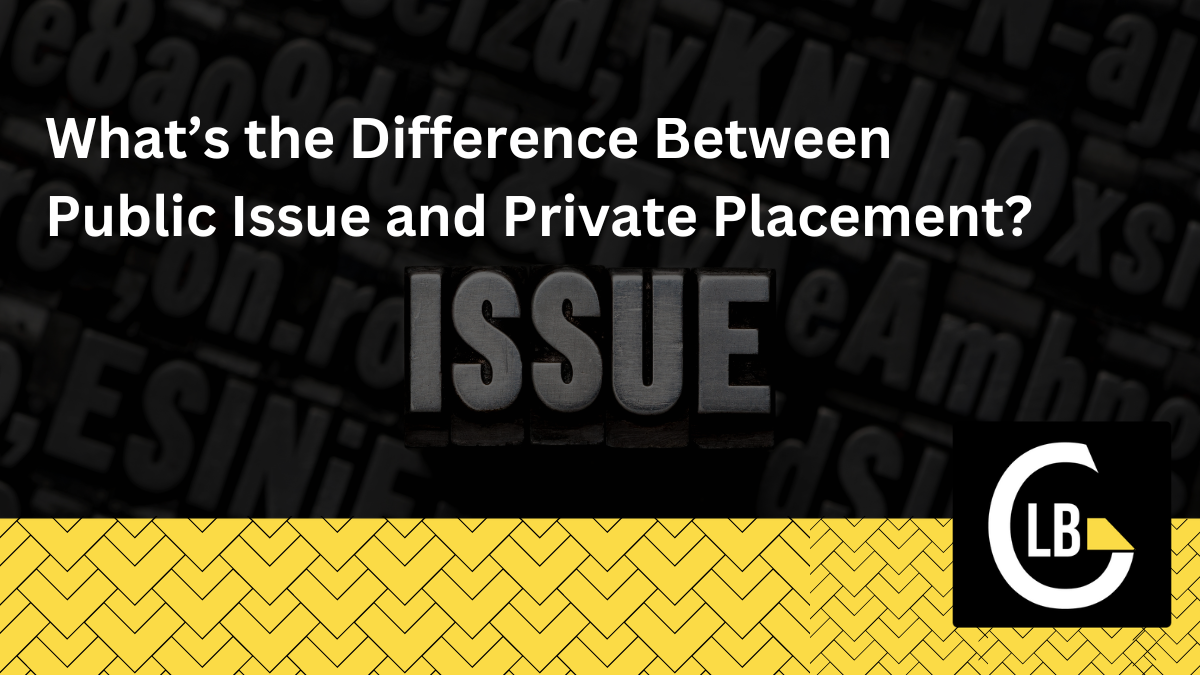When companies need funds for growth, new projects, or debt repayment, they often look at two common methods: Public Issue (also called an Initial Public Offering or IPO) and Private Placement. But what sets them apart? Let’s break it down in easy terms.
1. Public Issue (IPO)
In a Public Issue, a company offers its shares to the public for the first time. These shares are sold through the stock market, allowing anyone to invest. Here’s what you should know:
- Open to Everyone: Shares can be bought by individuals, institutions, or anyone interested.
- Strict Regulations: The company must follow strict rules and share detailed information about its finances and operations before going public.
- Transparency: Since the shares are available to the public, the company must be open about its financial situation and business outlook.
- Easy Trading: Once the shares are listed on the stock market, investors can buy or sell them easily.
An IPO is a way for companies to raise a large amount of money and gain public visibility. However, it also means dealing with greater scrutiny and pressure from shareholders and the market.
2. Private Placement
A Private Placement is a different approach. Instead of selling shares to the public, the company sells them to a select group of investors. These are usually large institutions, wealthy individuals, or investment firms. Here’s how it works:
- Limited Group: Shares are offered to a small, select group, not the general public.
- Fewer Regulations: The process is less regulated compared to an IPO, making it quicker and simpler for the company.
- Less Public Information: The company does not need to disclose as much information since the shares are sold privately.
- Long-Term Focus: Investors in private placements often hold onto their shares for a longer period, and these shares aren’t traded on the stock market.
Difference Between Public Issue and Private Placement:
| Aspect | Public Issue | Private Placement |
| Who Can Invest | General public | Select group of investors |
| Regulations | Highly regulated | Fewer regulations |
| Disclosure | Detailed financial disclosures required | Limited information |
| Time and Cost | More expensive and time-consuming | Faster and less costly |
| Trading | Easily traded on the stock exchange | Not easily traded |
Which Is Better?
- A Public Issue is ideal for companies that want to raise significant capital and increase their visibility. However, they must be ready for more regulations and public scrutiny.
- A Private Placement is faster, involves less regulation, and allows the company to keep things more private. But it’s limited to a select group of investors, and the shares are not as easy to trade.
Conclusion
Public issue and private placement are two different ways for companies to raise money. Public issues bring in more visibility and make it easier for investors to trade shares, but they come with higher costs and stricter rules. Private placements are quicker, more private, and have fewer rules, but the investment options are limited to selected investors. The right choice depends on what the company needs and how much attention it’s prepared to handle.
